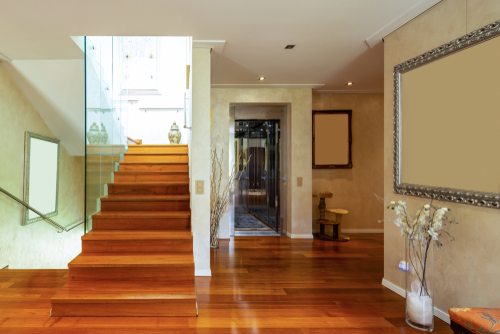
Is Installing Elevator At Home A Good Choice?
March 16, 2021
Can You Run Out Of Oxygen In An Elevator?
May 20, 2021What Is The Most Common Type Of Elevator?

What Is The Most Common Type Of Elevator? Elevators were first introduced two decades back, and right now, they are extremely popular. At inception, elevators were primarily used in offices, high-end apartments, and other commercial spaces.
However, with time, they have cemented their position as a necessary element in big households. And right now, there is a growing trend among people to install elevators in their homes.
With elevators, residential properties are much easier to navigate. This is especially true for elderly individuals and others suffering from disabilities. Do you fall in either of these categories?
Or are you simply looking to install elevators for their functional and aesthetic appeal? Either way, the first step is to understand the different types of elevators and their working mechanisms.
Once you have clarity about this simple concept, it will be much easier to zero in on a machine depending on your needs. Typically, elevators can be categorized into three major types.
These are hydraulic, machine room (with traction), and machine room (without traction) elevators. In the following sections, we will learn about – What is the most common type of elevator.
Hydraulic Elevators

The defining aspect of hydraulic elevators is their bottom-level piston support. This support pushes up when the hydraulic fluid experiences force from the electric motor. At this point, the elevator will start working and the fluid will be gradually released from the piston via the vales.
In most instances, you will find low-rise apartments using these hydraulic elevator variants. Most of these buildings feature two to eight floors and the moving speed of the elevator stands at 200 ft for every minute. The elevator’s machine room is nestled at the bottom, right beside the shaft.
The initial cost of these elevators is low and to make things easier, maintaining them is equally simple and cost-effective. The only con to using them is their high energy consumption.
Since the electric motor operates by working against our natural gravity, they end up consuming more energy than usual. Another issue you might encounter is leaking oil, which might pave the way to environmental damages.
Owing to these two disadvantages, hydraulic elevators are not as popular of late.
Traction Elevators (Machine room capacity)

This is yet another sleek choice for your residential or commercial building. Most traction elevators come with a lifting mechanism where ropes are tailored to pass through a wheel. This wheel again is attached to the elevator’s electric motor that essentially makes it work.
You will primarily find these elevators in mid and high-level buildings and their defining element is their super-fast. These elevators are not just fast when compared to their hydraulic counterparts, but they are essentially fast.
Unlike common elevators, these variants come with a counterweight which simplifies the operation. This is owing to the easy counterbalance in the weight of both the car and the occupant. This further ensures that motors don’t necessarily have to move heavy loads. You can further categorize traction elevators into the following two subcategories.
Geared Elevators:

As evident from the name, these devices come with a gearbox aligned with the motor. This again initiates the quick spin of the wheel which further gets the ropes in motion. The average maximum travel time of a geared elevator would be 500 ft for every minute. What’s more, they can end up traveling a whole distance of 250 ft.
The initial cost of these elevators is low. However, the maintenance cost is recurring. The energy consumption of these elevators is average.
Gearless Elevators:

In these elevators, you will find the elevator wheel directly attached to the device’s motor. These lifts can move up to 2000 ft every minute and their total coverage area is 2000 ft.
Owing to these features, gearless elevators are widely popular in buildings with multiple floors and other high rises. Their installation charge is high and maintenance cost is minimum. Their energy use is more efficient when compared to their counterparts.
Elevators without Machine Rooms

These are but a kind of traction elevator, the only difference being the lack of a machine room right at the top of the shaft. These devices can travel around 500 ft for every minute with a coverage area of 250 ft. They are easier to install when compared to geared variants and their maintenance costs to are reasonably low.
What Is The Most Common Type Of Elevator? – Bottom Line

Well, now that you have a clear insight into the various types of elevators, think no further and zero in on your preferred elevator right away! Since you also know about the working mechanisms of each elevator type, making your choice will be a tad easier.




